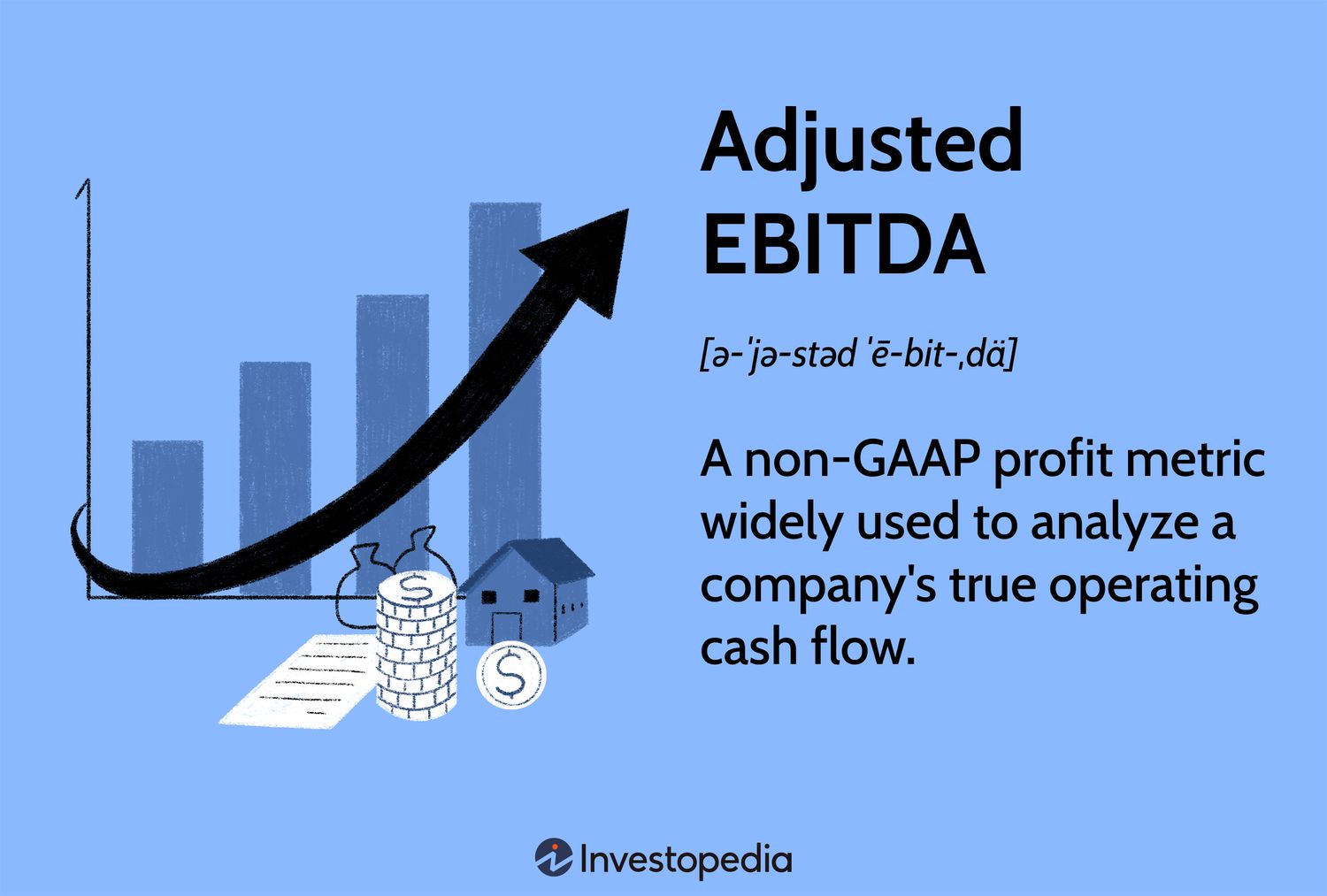Adjusted EBITDA: Unveiling the Power of Financial Analysis

Introduction
In today’s complex financial landscape, businesses often rely on various metrics to assess their performance and make informed decisions. One such metric that has gained significant traction is Adjusted EBITDA.
What is Adjusted EBITDA?
Adjusted EBITDA, an acronym for Earnings Before Interest, Taxes, Depreciation, and Amortization, is a financial metric used to measure a company’s operational performance by excluding certain non-operational expenses and income. Unlike traditional EBITDA, which provides a snapshot of profitability, Adjusted EBITDA offers a clearer picture by accounting for specific adjustments tailored to the company’s unique circumstances.
Definition
Understanding Adjusted EBITDA requires delving into its components and adjustments.
Understanding EBITDA and its Adjustments
EBITDA serves as a proxy for cash flow and profitability, providing insights into a company’s core operations. Adjusted EBITDA builds upon this foundation by incorporating additional adjustments to reflect the company’s true operational performance accurately.
Key Components of Adjusted EBITDA
Adjusted EBITDA typically includes adjustments for one-time expenses, non-cash items, changes in working capital, and other extraordinary items that may distort the company’s earnings.
Importance
The significance of Adjusted EBITDA lies in its ability to offer a more accurate portrayal of a company’s financial health.
Why Adjusted EBITDA Matters
Adjusted EBITDA serves as a valuable tool for investors, analysts, and management alike, providing a standardized measure of performance that facilitates comparisons across companies and industries.
Benefits of Using Adjusted EBITDA
- Facilitates apples-to-apples comparisons
- Helps identify underlying operational trends
- Guides strategic decision-making
Calculation
Calculating Adjusted EBITDA involves a straightforward formula, but the devil lies in the details.
Formula for Calculating Adjusted EBITDA
Adjusted EBITDA = Net Income + Interest + Taxes + Depreciation + Amortization + Adjustments
Examples Illustrating the Calculation
Let’s consider a hypothetical example to illustrate the calculation of Adjusted EBITDA and the significance of adjustments in arriving at a more accurate picture of a company’s performance.
Usage
Businesses employ Adjusted EBITDA in various contexts to gain insights into their operations and make informed decisions.
How Businesses Utilize Adjusted EBITDA
From financial reporting to valuation and strategic planning, Adjusted EBITDA plays a crucial role in several aspects of business management.
Comparing Adjusted EBITDA Across Industries
Different industries may have unique considerations when it comes to Adjusted EBITDA analysis. Understanding these nuances is key to making meaningful comparisons.
Limitations
While Adjusted EBITDA offers several benefits, it’s essential to recognize its limitations and exercise caution in its interpretation.
Criticisms and Limitations of Adjusted EBITDA
Critics argue that Adjusted EBITDA can be manipulated and may not always reflect economic reality. Additionally, relying solely on Adjusted EBITDA without considering other factors can lead to misguided decisions.
Factors to Consider Alongside Adjusted EBITDA
To mitigate these limitations, it’s crucial to supplement Adjusted EBITDA analysis with a comprehensive understanding of the company’s financial statements and operational context.
Analysis
Examining real-world examples and trends can provide valuable insights into the practical applications of Adjusted EBITDA.
Case Studies Showcasing Adjusted EBITDA Usage
By exploring case studies across industries, we can gain a deeper understanding of how companies leverage Adjusted EBITDA to drive value and navigate challenges.
Trends and Insights in Adjusted EBITDA
From the rise of subscription-based business models to the impact of digital transformation, various trends shape the relevance and interpretation of Adjusted EBITDA.
Comparison
While Adjusted EBITDA is a powerful tool, it’s essential to consider its strengths and weaknesses relative to other financial metrics.
Adjusted EBITDA vs. Other Financial Metrics
Comparing Adjusted EBITDA with metrics such as net income, free cash flow, and operating income can provide a more holistic view of a company’s financial performance.
Pros and Cons of Using Adjusted EBITDA
While Adjusted EBITDA offers advantages in terms of simplicity and comparability, critics caution against its potential for manipulation and its limitations in capturing certain aspects of a company’s financial health.
Future Outlook
As businesses continue to evolve, so too will the role of Adjusted EBITDA in financial analysis.
Emerging Trends in Adjusted EBITDA
From the integration of sustainability metrics to the refinement of adjustment methodologies, emerging trends promise to enhance the relevance and reliability of Adjusted EBITDA in the years to come.
Predictions for the Future of Adjusted EBITDA
While the future of Adjusted EBITDA remains subject to debate, one thing is clear: its evolution will be shaped by ongoing advancements in technology, regulation, and market dynamics.
Conclusion
In conclusion, Adjusted EBITDA represents a powerful tool for assessing a company’s operational performance and guiding strategic decision-making. By understanding its nuances, limitations, and practical applications, stakeholders can harness the full potential of Adjusted EBITDA to drive value and achieve sustainable growth.



Leave a Comment